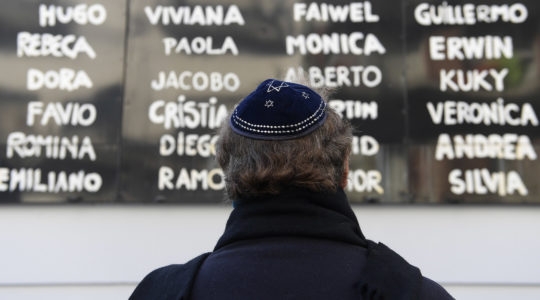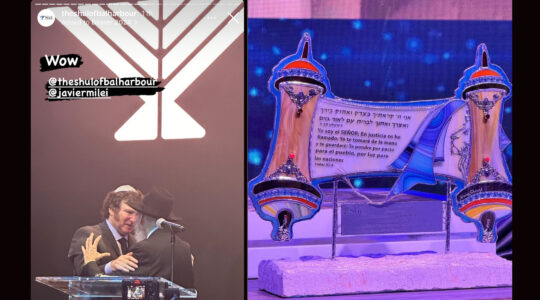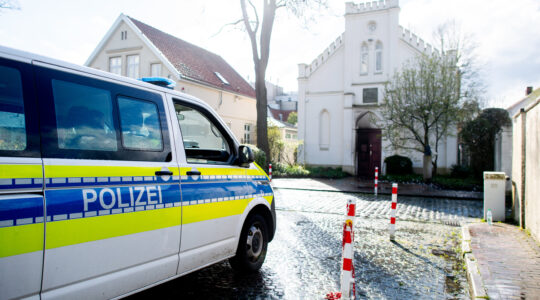(JTA) — An annual march of remembrance was held to mark the 69th anniversary of the liquidation of the Krakow ghetto.
The march retraces the steps of one that took place on March 13 and 14, 1944, when some 6,000 Jews living in the Krakow ghetto in the Podgorze district were marched from the ghetto to a work camp in Plaszow several miles away. Another 2,000 were sent to the Auschwitz death camp, while another 1,000 were shot in the center of the ghetto, now known as Ghetto Heroes’ Square, where Sunday’s march began.
Tadeusz Jakubowicz, the president of Jewish Community of Krakow and reportedly the only Pole who lived in the ghetto from the beginning to the end of its existence, led the march.
"I am happy to see how many people come here every year," said Jakubowicz, who as a 5-year-old made the walk that is mirrored by the annual march with his mother.
Israel’s ambassador to Poland, Zvi Rav-Ner, remarked that "Some people claim that the Holocaust never happened. Let’s not forget those who died here and in Plaszow, and those who were trying to help them."
March participants from Poland, Israel and the United States put flowers under the remnants of the ghetto wall, which was erected by the Nazis in 1941. The ceremony ended with the recitation of the Mourner’s Kaddish under the monument commemorating victims of Holocaust at the site of the Plaszow labor camp.
Among the ceremony participants were the chief rabbi of Krakow, Boaz Pash; Chabad Rabbi Eliezer Gurari; and a member of the European Parliament, Roza Thun, as well as the chief rabbi of Galicia, Edgar Gluck; vice governor of the Malopolskie Province, Andrzej Harezlak; and a representative of Krakow’s young Jewish society, Klaudia Klimek.
"We young Jews in Krakow remember and want to continue the tradition of the march," Klimek said. "We live now in a different world, time that makes us easily forget about our sad, hard history. But this one day makes us think, makes us stop for one moment and come here to this place and see not only a bus station, flower shop or restaurant but as it looked 69 years ago — a place of terrible pain, enormous fear."





